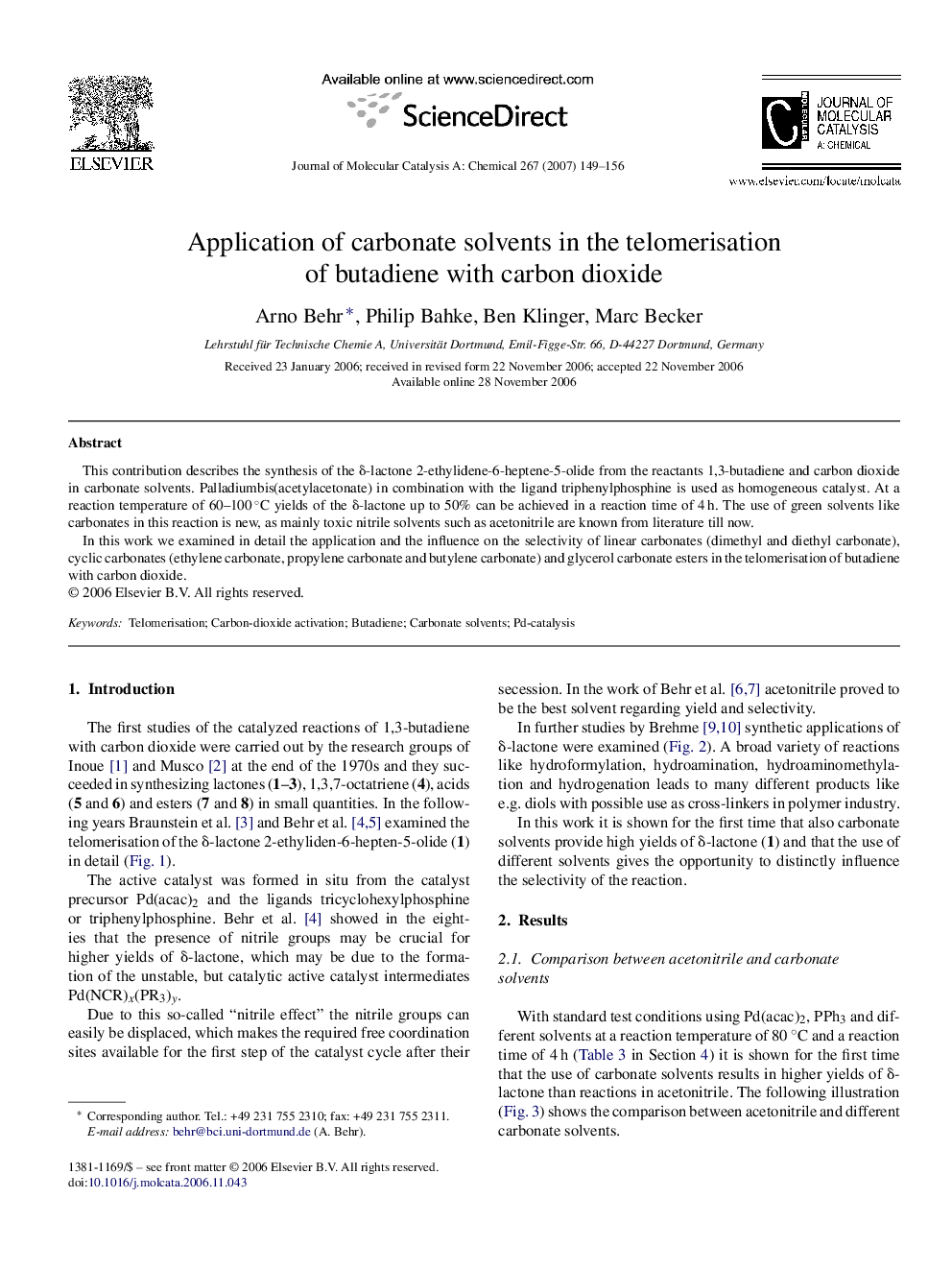| Article ID | Journal | Published Year | Pages | File Type |
|---|---|---|---|---|
| 68792 | Journal of Molecular Catalysis A: Chemical | 2007 | 8 Pages |
This contribution describes the synthesis of the δ-lactone 2-ethylidene-6-heptene-5-olide from the reactants 1,3-butadiene and carbon dioxide in carbonate solvents. Palladiumbis(acetylacetonate) in combination with the ligand triphenylphosphine is used as homogeneous catalyst. At a reaction temperature of 60–100 °C yields of the δ-lactone up to 50% can be achieved in a reaction time of 4 h. The use of green solvents like carbonates in this reaction is new, as mainly toxic nitrile solvents such as acetonitrile are known from literature till now.In this work we examined in detail the application and the influence on the selectivity of linear carbonates (dimethyl and diethyl carbonate), cyclic carbonates (ethylene carbonate, propylene carbonate and butylene carbonate) and glycerol carbonate esters in the telomerisation of butadiene with carbon dioxide.
Graphical abstractThe chemical use of carbon dioxide as C1-building block and supercritical solvent is becoming more and more interesting for research and industry. Carbon dioxide is a major cause of the so-called greenhouse effect, leading possibly to changes in climate. For this reason and because of the fact that carbon dioxide is a cheap and nearly unlimited C1-building block the chemical use of CO2 is of great interest. Accounting political demands it can be assumed that the intensity of research and the interest of industry will increase. In the reaction of carbon dioxide with 1,3-butadiene it is possible to synthesize the very interesting δ-lactone 2-ethylidene-6-heptene-5-olide under very mild reaction-conditions. By the substitution of the formerly used toxic acetonitrile with cyclic carbonates the process is now free of hazardous solvents. Figure optionsDownload full-size imageDownload as PowerPoint slide
